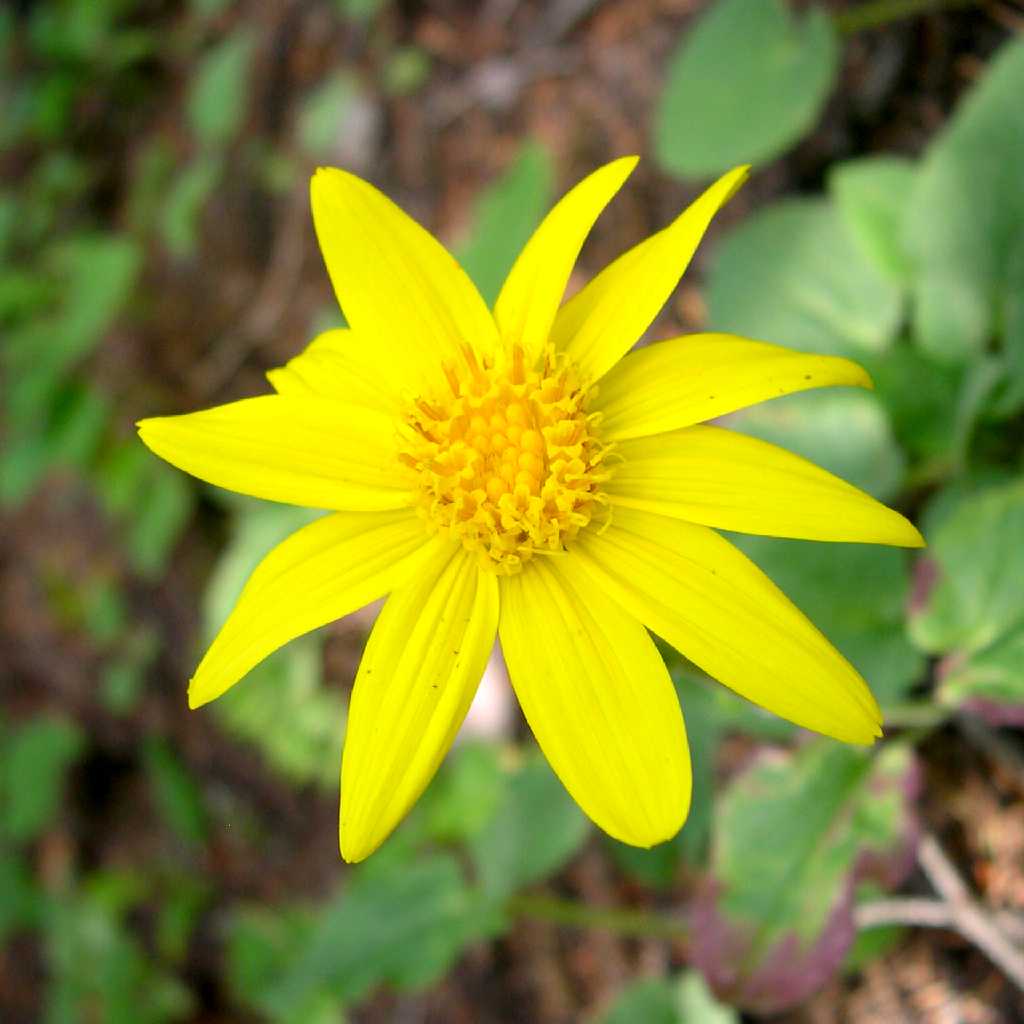Arnica
|
Family: Asteraceae |
Perennials, 5-100 cm (rhizomes relatively long and thin; caudices woody, relatively short and thick). Stems erect, simple or branched. Leaves basal (sterile basal rosettes often present) and/or cauline; mostly opposite (usually 1-10 pairs, distalmost sometimes alternate and usually smaller); petiolate or sessile; blades mostly cordate, deltate, elliptic, lanceolate, linear, oblanceolate, oblong, obovate, ovate, or spatulate, margins entire or toothed (usually dentate, denticulate, or serrate, sometimes crenate or slightly lobed), faces glabrous, hirsute, hispidulous, pilose, puberulent, scabrous, tomentose, villous, or woolly, often stipitate-glandular as well. Heads radiate or discoid, borne singly or in cymiform or corymbiform arrays. Involucres campanulate, hemispheric, or turbinate, mostly 6-20+ mm diam. Phyllaries persistent, 5-23 in (1-)2 series. Receptacles convex, smooth or pitted, epaleate. Ray florets 0, or 5-22, pistillate, fertile; corollas yellow to orange. Disc florets 10-120, usually bisexual and fertile (functionally staminate in A. dealbata); corollas usually yellow, rarely cream, tubes shorter than funnelform throats, lobes 5, ± deltate (anthers usually yellow, purple in A. lessingii and A. unalaschcensis). Cypselae (gray or brown to black) ± conic, fusiform, or obovoid-cylindric, nerves 5-10(-20), faces hairy, glandular, or glabrous; pappi usually persistent, of 10-50 white or stramineous to tawny, fine, barbellate or subplumose to plumose bristles (0 in A. dealbata). x = 19. Arnica is circumboreal, predominantly montane, and exhibits maximum species diversity in western North America. It includes common and very widespread species as well as relatively uncommon, narrow endemics. Polyploidy and apomixis are common in the genus, resulting in considerable morphologic variability. Arnica montana from Europe has been used medicinally for centuries, and unsubstantiated claims have been made regarding the medicinal properties of some North American species. Here, in key leads and descriptions, numbers of pairs of leaves refer to flowering shoots.
Heads radiate (in our spp.) or sometimes discoid, the rays pistillate, yellow or orange, relatively few and large; invol bracts herbaceous, subequal but ±evidently biseriate; receptacle convex, naked; disk-fls perfect and fertile, yellow; style-branches flattened, truncate, penicillate; achenes cylindric, 5-10-nerved; pappus of numerous white to tawny, barbellate to subplumose, capillary bristles; perennial herbs with opposite lvs (uppermost lvs rarely alternate) and solitary to numerous, rather large, turbinate to hemispheric heads. 27, temperate and boreal parts of N. Hemisphere. Gleason, Henry A. & Cronquist, Arthur J. 1991. Manual of vascular plants of northeastern United States and adjacent Canada. lxxv + 910 pp. ©The New York Botanical Garden. All rights reserved. Used by permission. |

